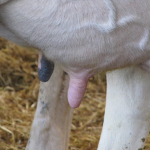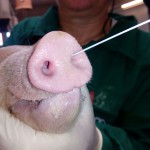New diagnostics to detect contagious mastitis pathogens in different niches of cow udder
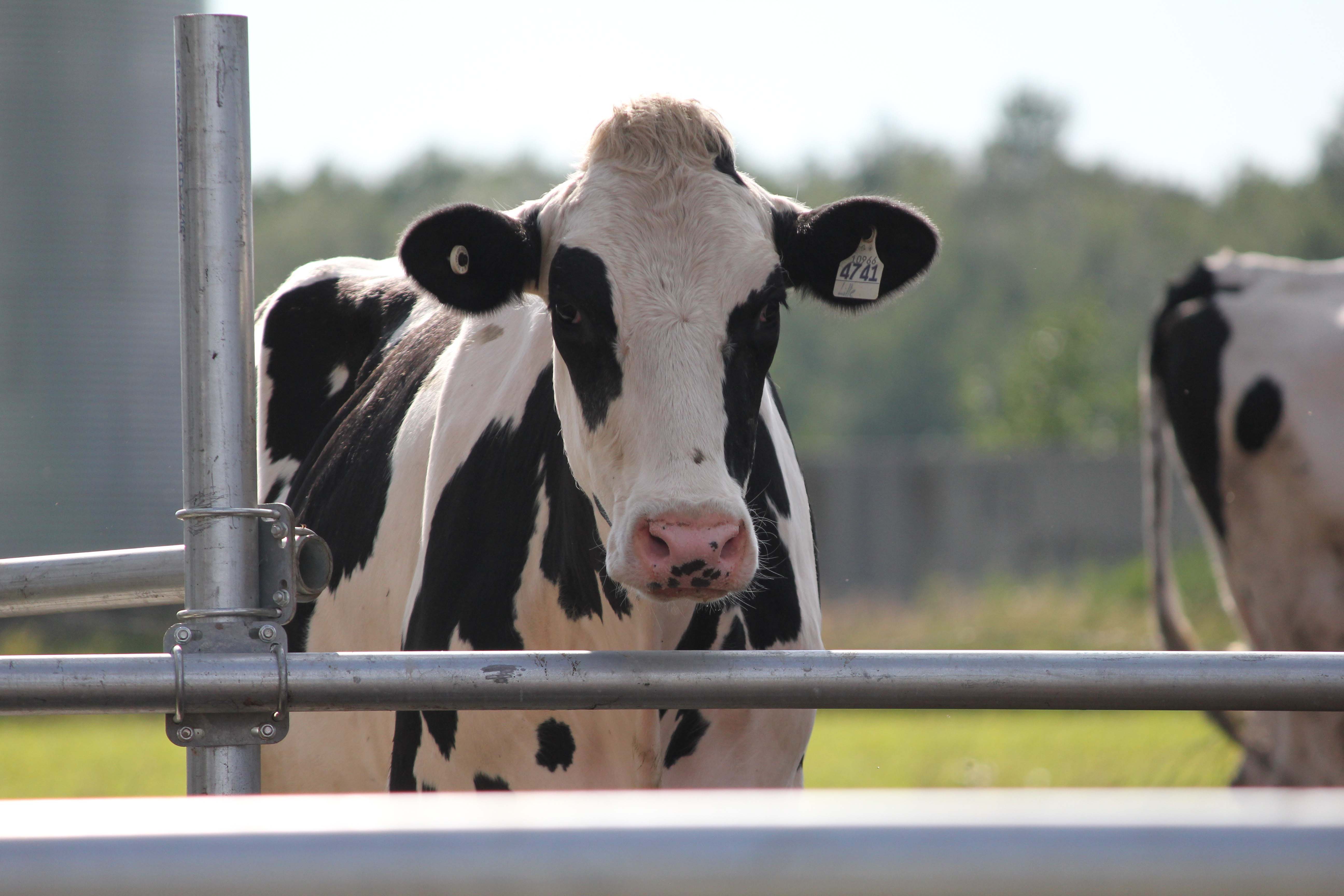
Intramammary subclinical infections (IMI) with Streptococcus agalactiae and Staphylococcus aureus are a major problem in dairy herds from an economic, diagnostic and public-health related point of view. The contagious udder pathogen Staph. aureus is widespread in dairy herds, and despite successful control efforts to reduce Strep. agalactiae in Scandinavian countries during the 20th century; the proportion of positive herds increased throughout the early 21st century.
The control of bovine mastitis caused by Staph. aureus and Strep. agalactiae mainly depends on prevention of new infections within and between the dairy herds through maintenance of proper biosecurity measures. The transmission of these contagious mastitis pathogens occurs primarily during milking. Milking hygiene and teat cleaning in automatic milking system (AMS) differ from the conventional milking system, with more cows per milking unit and no contact with human hands. Therefore, a difference in the prevalence of S. aureus and S. agalactiae, isolated from both milk and teat skin in AMS compared to conventional milking systems, is expected.
Even though both bacteria are known as contagious mastitis pathogens, environmental reservoirs are reported in the scientific literature. A faeco-oral transmission cycle may perpetuate and amplify the presence of Strep. agalactiae within the dairy herds but the importance of these environmental reservoirs is still being discussed. This, together with the environmental reservoir of contagious mastitis pathogens, could explain why Staph. aureus remains a problem, and why there has been a re-emergence of Strep. agalactiae in line with an increase in the proportion of farms using AMS in Denmark.
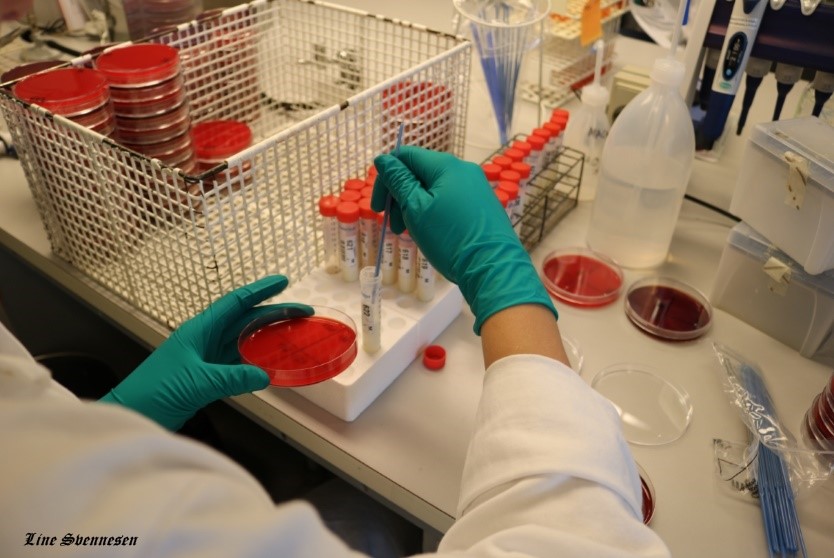
Working with bacterial cultivation techniques.
Monitoring udder health performance is impossible without reliable and affordable diagnostic methods. Therefore, accurate diagnostic screening tests for early detection of pathogen specific subclinical mastitis are essential to initiate the appropriate treatment or culling to separate infected animals and to take measures to reduce the risk of new infections within herd or prevent introduction in new herds. So far, bacterial culturehas been the reference standard for identification of mastitis pathogens but due to the higher sensitivity and quick results, PCR is gaining more footage in the udder health monitoring. Furthermore, use of molecular methods as part of mastitis diagnostics could contribute to targeting of transmission prevention measures.
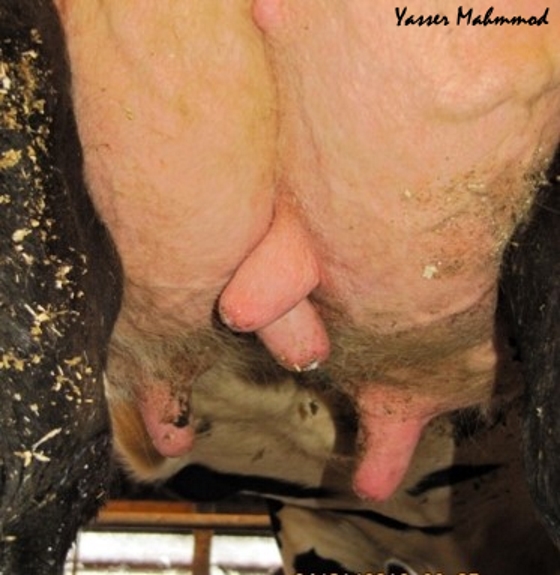
Cow udder. Autor: Yasser Mahmmod
The bovine teat skin may be an important reservoir for contagious mastitis pathogens, as the presence of bacteria on teat skin has been associated with IMI in the same quarter and bacteria has been found on teat skin in quarters not having IMI, suggesting that colonization and/or contamination of teat skin from sources other than milk of the same quarter is likely possible. Furthermore, controlling of Staph. aureus and Strep. agalactiae in large dairy herds without considering the environmental reservoirs may lead to unsuccessful control and eradication. Therefore, PCR tests on teat skin or environmental samples could become a useful tool in controlling Strep. agalactiae and Staph. aureus mastitis.
We carried out this study to estimate the sensitivity and specificity of the commercially available Mastit4 qPCR assay and BC for the identification of Strep. agalactiae and Staph. aureus in milk and teat skin samples from high somatic cell count cows in AMS herds using latent class model fit within a Bayesian framework. We randomly selected 30–40 cows with high somatic cell counts from eight Danish Strep. agalactiae-positive dairy herds with AMS. Teat skin samples and aseptic milk samples were collected from right rear quarters (n=287). Bacterial colonies of Strep. agalactiae and Staph. aureus were isolated on different bacterial culture agars and then were phenotypically identified based on morphological characteristic and subsequently confirmed by MALDI-TOF assay and/or latex agglutination. The samples were tested using the Mastit4 qPCR assay. Se and Sp were estimated using LCA models.
We concluded that the sensitivity for diagnosing Strep. agalactiae and Staph. aureus IMI was higher for qPCR than BC, suggesting that qPCR is a valuable method for detecting both pathogens from quarter-level milk samples. The performance of BC in the detection of Strep. agalactiae and Staph. aureus on teat skin was poor compared to qPCR, indicating that differences in the target condition of the two methods should be considered when implementing them as routine diagnostic tests for detecting teat skin colonisers.
References:
- Svennesen, L., Mahmmod, Y. S., Skjølstrup, N. K., Mathiasen, L. R., Katholm, J., Pedersen, K., … & Nielsen, S. S. (2018). Accuracy of qPCR and bacterial culture for the diagnosis of bovine intramammary infections and teat skin colonisation with Streptococcus agalactiae and Staphylococcus aureus using Bayesian analysis. Preventive veterinary medicine, 161, 69-74. doi: 10.1016/j.prevetmed.2018.10.013
- This study was funded by the Danish Milk Levy Fund. DNA Diagnostic A/S funded and performed the qPCR analyses. The autors wish to thank the Danish farmers for making their cows available for our study and the laboratory technicians at Technical University of Denmark for their technical support.


